Over time, garage doors can fall victim to the relentless forces of nature, and one common issue that plagues them is oxidation. Oxidation, typically appearing as a chalky, powdery residue or rust on the door’s surface, not only detracts from your home’s curb appeal but can also lead to structural deterioration if left untreated. Restoring the pristine look of your garage door and preventing further damage is essential. In this article, we will explore how to remove oxidation from garage door.
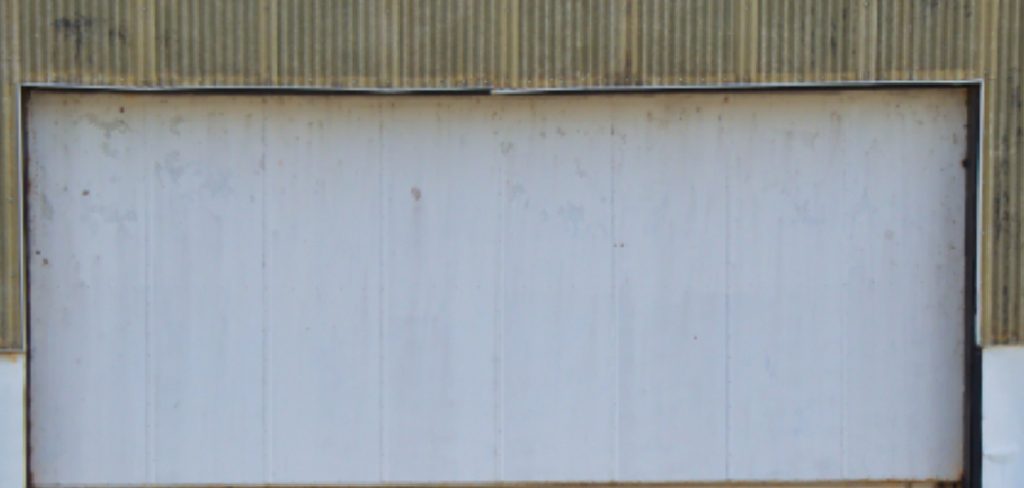
From choosing the right cleaning agents to employing proper scrubbing and refinishing methods, we’ll provide valuable insights and practical tips to revitalize your garage door’s appearance. Whether you’re a DIY enthusiast or a homeowner seeking professional assistance, this guide will empower you to tackle oxidation and bring back the luster and longevity of your garage door.
Importance of Addressing Oxidation on Garage Doors
There is no denying that garage doors are an important part of any home. They not only provide security and protection for your vehicles and belongings, but they also add to the aesthetic appeal of your property. However, over time, garage doors can become subject to oxidation due to exposure to various environmental elements such as rain, snow, and sunlight.
Oxidation refers to the chemical reaction that occurs when oxygen comes into contact with metal. This can result in the formation of rust, which not only looks unsightly but also weakens the structural integrity of your garage door. Ignoring oxidation on your garage door can lead to expensive repairs or even complete replacement.
Hence, it is important to address oxidation on garage doors as soon as possible. Regular maintenance and cleaning can help prevent oxidation, but in case it has already occurred, there are ways to remove it and restore the appearance of your garage door.
Some common methods for removing oxidation from garage doors include wire brushing, sanding, or using chemical cleaners. However, these methods may require special equipment and may be time-consuming. It is important to follow proper safety precautions when using these methods.
Alternatively, you can hire professional services that specialize in garage door maintenance and repair. They have the expertise and equipment to safely remove oxidation from your garage door without causing any damage. This not only saves time and effort but also ensures a thorough and effective removal of oxidation.
10 Methods How to Remove Oxidation from Garage Door
1. Cleaning with Soap and Water
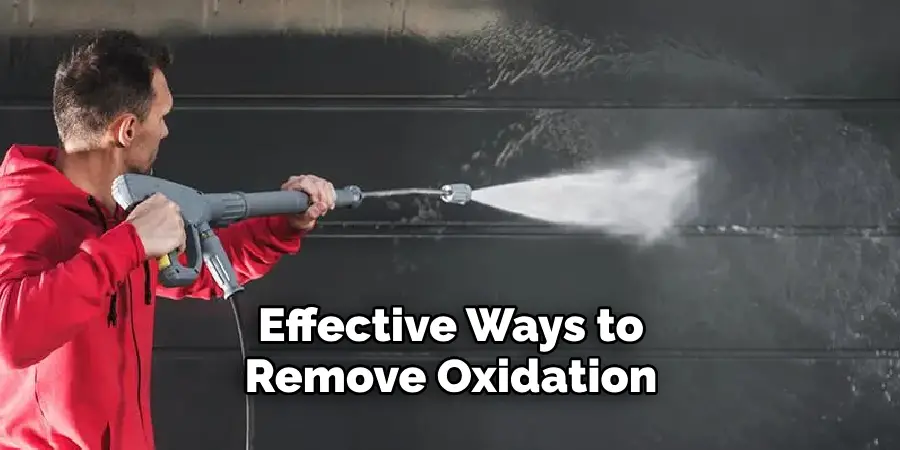
Cleaning your garage door with soap and water is one of the easiest and most effective ways to remove oxidation from its surface. Start by mixing a solution of warm water and mild dishwashing detergent in a bucket. Then, use a soft cloth or sponge to scrub the door with the soapy water. Rinse off the soap with clean water and dry the door thoroughly with a clean towel.
2. Washing with Vinegar
Vinegar is another great option for removing oxidation from your garage door. Mix equal parts white vinegar and warm water in a bucket, then use a soft cloth or sponge to scrub the surface of the door with the mixture. Once you’ve finished washing, rinse off all of the vinegar residue with clean water and dry it thoroughly.
3. Polishing With Olive Oil
Polishing your garage door with olive oil can help remove oxidation from its surface while also giving it an attractive shine. Start by rubbing a small amount of olive oil onto the door using a soft cloth or sponge, then buff it until it has an even sheen. Once you’ve finished polishing, wipe away any excess oil using a clean cloth or paper towel.
4. Sanding
Sanding is another effective method for removing oxidation from your garage door’s surface. Start by using medium-grit sandpaper to sand away any rust spots on the door’s surface, then move up to finer grits as necessary until all oxidation has been removed and the surface is smooth again. Once you’ve finished sanding, wipe away any dust residue using a damp rag before applying paint or sealer to protect it from further damage.
5. Applying Metal Polish
Applying metal polish is another great way to remove oxidation from your garage door’s surface while also restoring its shine and luster. Start by applying metal polish directly to the oxidized areas using a soft cloth or sponge, then let it sit for several minutes before buffing it off using another clean cloth or paper towel until all oxidation has been removed and your garage door looks like new again!
6. Using Baking Soda
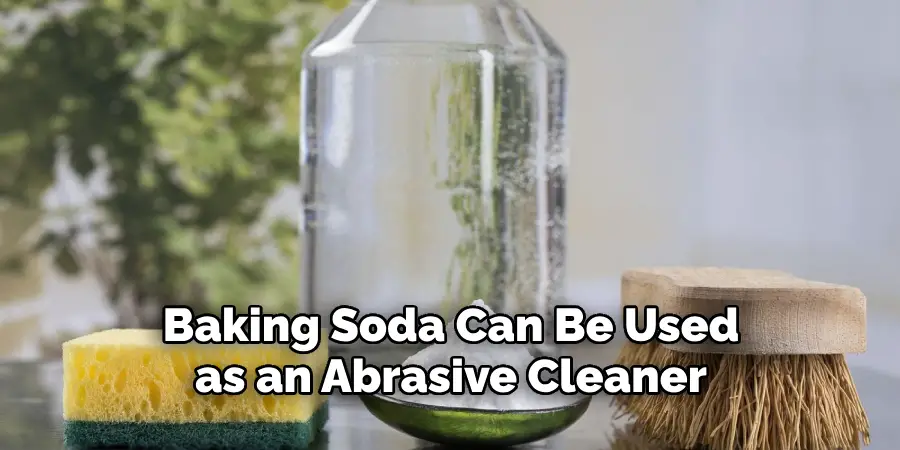
Baking soda can be used as an abrasive cleaner that can help remove oxidation from your garage door’s surface without damaging its paint job or finish in any way! To use baking soda as an abrasive cleaner, mix 1/2 cup of baking soda with 2 cups of warm water in a bucket until it forms a paste-like consistency, then use a soft cloth or sponge to scrub away at any oxidized areas on your garage door until they are gone!
7. Using Lemon Juice
Lemon juice can also be used as an effective cleaning agent for removing oxidation from your garage doors’ surfaces! Start by mixing equal parts lemon juice and warm water in a bucket, then use either a soft cloth or sponge to apply this mixture directly onto any oxidized areas on your garage doors’ surfaces before rinsing them off completely with clean water afterward!
8. Applying Aluminum Foil
Applying aluminum foil is another great way of removing oxidation from your garage doors’ surfaces without damaging their paint job! To do this simply cut out small pieces of aluminum foil into strips that are slightly larger than whatever area needs cleaning on your doors’ surfaces, then rub these pieces back and forth over this area until all oxide has been removed!
9. Using Steel Wool
Using steel wool is another great way of removing oxide build-up on your garage doors’ surfaces without damaging their paint jobs in any way! Simply take some steel wool pads (or steel wool scouring pads), which can be found at most hardware stores, and gently rub them back and forth over whatever area needs cleaning on your doors’ surfaces until all oxide has been removed!
10. Applying WD-40
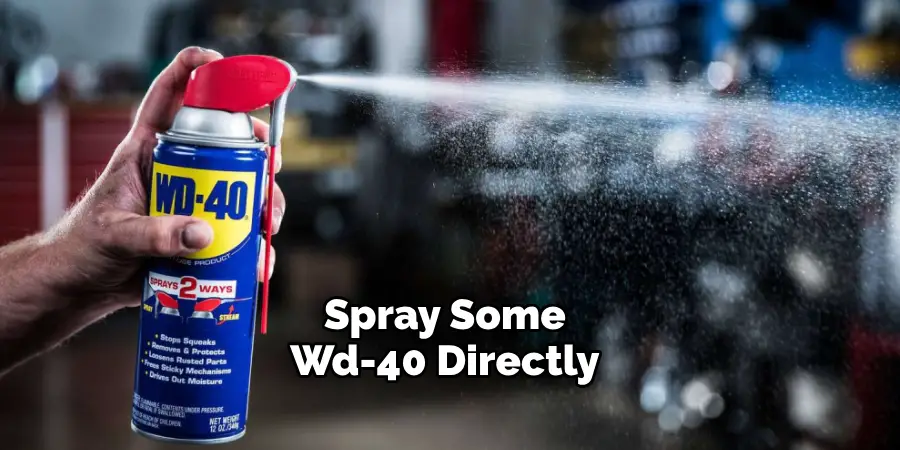
Applying WD-40 is yet another great way of getting rid of oxide build-up on your garage doors’ surfaces without damaging their paint jobs in any way! To do this, spray some WD-40 directly onto whatever area needs cleaning on your doors’ surfaces before taking either some steel wool pads (or steel wool scouring pads), which can be found at most hardware stores, and gently rubbing them back and forth over this area until all oxide has been removed!
Things to Consider When Removing Oxidation from Garage Door
When it comes to removing oxidation from your garage door, there are a few important things to consider before you begin the process. These factors can affect not only the success of your efforts but also the overall health and appearance of your garage door.
First and foremost, make sure you have the right tools for the job. Depending on the severity of the oxidation, you may need specific tools such as a wire brush, sandpaper, or even a chemical rust remover. Using the wrong tools can not only be ineffective but also cause damage to your garage door.
Next, it’s important to assess the extent of the oxidation on your garage door. Is it just a few spots here and there or is the entire surface covered in rust? This will determine the amount of time and effort required to remove it. It’s also important to take note of any deep pits or holes caused by the oxidation, as these may need additional repair before proceeding with removal.
Before you begin removing the oxidation, be sure to properly clean and prep your garage door. This includes removing any debris or loose paint, as well as washing the surface with a mild detergent and water. This will ensure that the oxidation removal process is more effective and efficient.
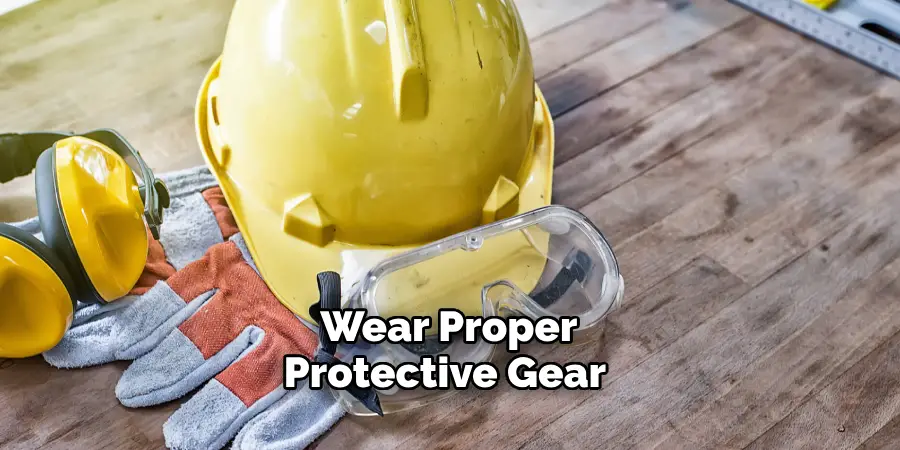
It’s also important to wear proper protective gear when removing oxidation from your garage door, as it can be a messy and potentially hazardous task. This may include gloves, goggles, and a mask to protect yourself from any chemicals or debris.
Conclusion
Overall, when it comes to removing oxidation from your garage door, there are a few things that you can do in order to restore the beauty and shine of your house. Using the right cleaners and polishers or using a DIY solution will make all the difference. While stainless steel wool will help with deeper scratches, gently sanding with 1200 sandpaper before applying automotive wax is an ideal way to get out scratches and small gouges.
To really make your door look seamless and new again, adding automotive wax will give it that added shine as well as protect it from further corrosion. So if you’re looking for a cost-efficient approach on how to remove oxidation from garage door, then why not try giving it some TLC yourself first? You just may be surprised at the results of your hard work!
I am Rick. I grew up helping my dad with his handyman service. I learned a lot from him about how to fix things, and also about how to work hard and take care of business. These days, I’m still into fixing things- only now, I’m doing it for a living.
I’m always looking for new ways to help people grow and develop. That’s why I have created this blog to share all my experience and knowledge so
that I can help people who are interested in DIY repair.

